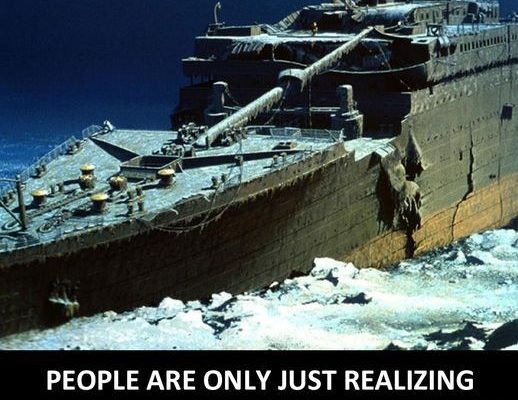The sinking of the Titanic is a chilling part of history, and the lack of human remains at its wreck site raises deep questions that still confuse experts and curious people today.
The absence of skeletons at the Titanic’s final resting place has puzzled many. Unlike other shipwrecks, where bodies have been found easily, the missing remains from the Titanic create interesting questions. When it sank in 1912 after hitting an iceberg, around 1,517 individuals lost their lives.1
One major factor is how deep the Titanic lies. Experts say that being about 3,800 meters underwater plays a big role in why there are no bones or skeletons.
Deep-sea explorer Robert Ballard explains this mystery by saying that seawater at such depths can dissolve bones because it lacks enough calcium carbonate, which is a key part of bones. Basically, the water absorbs these bones to help spread calcium into an ocean that doesn’t have enough.
This discovery has shocked some people; many took to Reddit to share their surprise and disbelief. The special conditions down in the ocean have led to no skeletal remains being found but some artifacts like shoes remain intact showing there were once humans here but not anymore.2 However, this doesn’t mean all evidence of skeletons has vanished from the ocean floor.
Legal and Ethical Debates About Titanic
Legal arguments over proposed trips to recover certain artifacts from the Titanic—like its famous radio equipment—have sparked discussions. Concerns about disturbing possible human remains and disrespecting this site as a memorial have come up leading to court battles. Is this memorial just a mass grave? Or do museums and historians deserve access to items buried nearly 4 kilometers below?
Keeping alive the memory of those who died on board while also treating it as an important historical artifact is crucial. The debate focuses on finding a balance between scientific research and honoring those who lost their lives.
Some people want more investigations done to possibly find human remains for closure for families while others believe we should leave it alone out of respect for those who passed away.
Technological challenges also complicate exploring such depths. Deep-sea missions face tough obstacles like navigating through dark waters and dealing with harsh conditions which could affect any discoveries made down there! It’s just as hard to retrieve items found as it is deciding if we should even try!
Unanswered Questions About The Titanic
Even with many theories out there about why no skeletons are present on board remain somewhat unclear.3 Some suggest there might’ve been strong storms during its sinking – scattering life-jacketed passengers far away from where it went down while others think remnants could still be inside parts of the ship itself.
Despite all these ideas floating around (no pun intended), what happened to those missing bodies continues puzzling experts! While it’s true that calcium-poor waters explain some disappearances; they don’t answer everything completely! The desire for truth clashes with ethical issues plus wanting respect for this historic site!
As discussions go on about these matters; remember—the tragedy surrounding Titanics serves as a reminder regarding how costly disasters can be! Whether or not we ever figure out what happened with those missing bodies; Titanics legacy will always stand strong honoring everyone who tragically perished aboard that doomed vessel.



